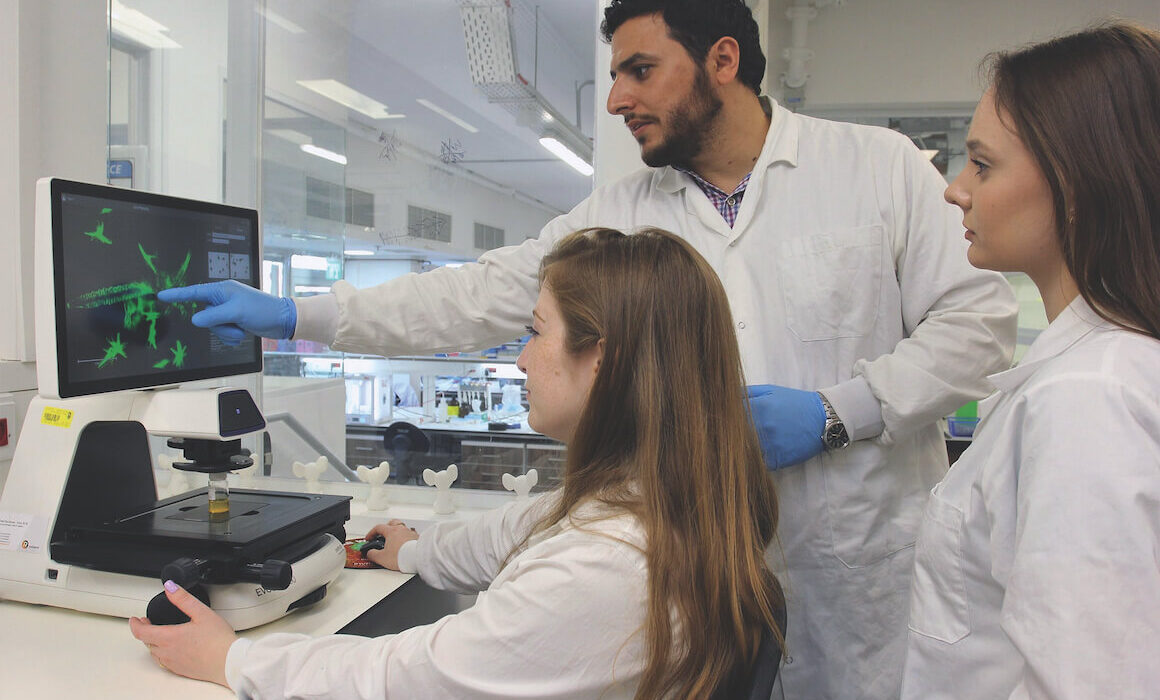Researchers Offer “Hope” for Treating Diabetes

As a boy of just 12, Technion Neubauer Assistant Professor Shady Farah gave his grandmother daily insulin injections. “It was tough,” he recalled. “You love her and care about her, and it causes pain.” She would often tell him, “‘Shady, maybe one day you can help find a cure for this.’”
Prof. Farah took her words to heart. Securing a $700,000 grant from the Juvenile Diabetes Research Foundation (JDRF), he and Assistant Professor Joshua Doloff of Johns Hopkins University are advancing an efficient, pain-free solution for people suffering from type 1, or “juvenile” diabetes, a chronic condition in which the pancreas produces little or no insulin by itself.
If successful, the new technology, dubbed “Hope,” could do away with painful insulin injections, making life easier for an estimated 8.4 million people living with type 1 diabetes worldwide.
Diabetes patients have options for managing the disease, but they all come with challenges. In the traditional approach, patients prick their fingers to obtain a droplet of blood, measure their glucose level, inject themselves with insulin accordingly, and prick again to ensure they got it right. This method is accurate but intrusive, as patients usually need to test several times a day.
Alternatively, patients can wear a continuous glucose monitor (CGM) with a sensor just under the skin that measures glucose levels and alerts the wearer’s smartphone to release insulin as needed. But CGMs are not always accurate, and the sensor can cause scar tissue.
There is a third, more promising treatment option: transplanting clusters, or “islets,” of healthy donor pancreatic cells that sense the patient’s glucose level and produce insulin inside the patient. But like all transplants, these artificial biological pancreases risk rejection by the immune system, so patients must continuously be on immunosuppressant drugs.
Scientists have improved the method by encapsulating the islets in jellylike hydrogels that provide some protection from the immune system — but not enough. That’s where Profs. Farah and Doloff come in.
While postdoctoral fellows at the Koch Institute at the Massachusetts Institute of Technology and the Boston Children’s Hospital/Harvard Medical School, the two developed crystallized anti-inflammatory drugs that fend off unwanted immune responses, which they then incorporated into the hydrogels holding the insulin-producing cell islets. The crystals dissolve slowly, allowing the islets to produce insulin without triggering rejection in the areas surrounding the hydrogel. The rest of the immune system is untouched, so patients don’t need to take immunosuppressant drugs.
Now, Profs. Farah and Doloff are using the grant to develop next-generation crystals that would protect more complicated transplants, such as animal-to-human grafts and stem cells that could be differentiated into pancreatic cells — providing patients with a larger pool of tissue for transplants. “We named them ‘Hope’ because they might help us treat many conditions in the future, not just diabetes,” said Prof. Farah. The advanced crystals could be applied to other implantable medical devices such as pacemakers, stents, or sensors. They have already shown promise in preclinical trials, curing diabetes in mice for 1.3 years without rejection or the need for insulin injections. If all goes well, Prof. Farah believes the technology could be commercialized in five to 10 years.
“I’ve seen many people with diabetes, and I want to make a difference,” said Prof. Farah. “With this grant, I hope we can develop technologies to help patients with type 1 diabetes because they really are suffering and deserve a more convenient lifestyle.”